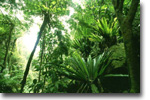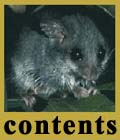
• welcome |
JERVIS BAY AND SURROUNDS continued |  |
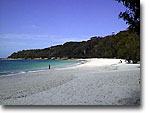 |
Scenic value The bay and its environs have considerable aesthetic significance, with the hinterland providing an important backdrop to an expansive and outstanding bay. |
 |
Condition The Commission sums as the condition of Jervis Bay and Surrounds as ‘good’ and flags the potential danger to the place as ‘unsympathetic development’. |
| INDIVIDUALLY LISTED PLACES Royal Naval College HMAS Creswell Built 1913-1915, the college is a valuable example of architecture of the time. Discrete use of design elements integrate the buildings into a total, sensitive whole, which is complemented by the landscaping and the college’s relationship with the sea. HMAS Creswell is normally open for restricted public inspection on weekend afternoons. |
| Booderee National Park The nature reserve has been listed in the Register of the National Estate since 1983. It contains spectacular scenery and a great diversity of flora and fauna of high scientific value, as well as many different types of Aboriginal sites and historic structures. |
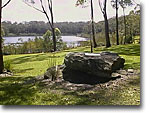 |
| Cape St George Lighthouse The ruined lighthouse on imposing cliffs at Cape St George serves as a reminder of early European occupation. The lighthouse was erected in 1859, similar in design to Francis Greenway’s famous South Head Lighthouse in Sydney. The remaining walls are an example of the fine stonemasonry. The lighthouse was deliberately razed early this century, after the construction of the Point Perpendicular Light, because it was felt to be a ‘navigational hazard.’ |
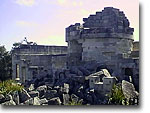 |
| Christian’s Minde Settlement This historic settlement consists of several houses and buildings dating from 1880 which have considerable charm and architectural interest. They were built by the Ellmoos family who lived initially by fishing before opening ‘Christian’s Minde’ as a guesthouse in 1890. The settlement is still looked after with careful and loving attention by the Ellmoos family. |
| Crocodile Head Area This area of approximately 80ha south-west of Currarong township includes the Devils Hole, a natural formation in the cliffs which connects with the sea through a series of caves and through which the sea surges with spectacular force and noise. It is a site of mythological importance to the local Jerrinja people. |
| Currarong Rock Shelters Area An archaeological site which provides evidence on the Small Tool phase of Australian prehistory and shows technological changes over the last few thousand years. |
| Point Perpendicular Lightstation The lighthouse, built in 1899, represents the culmination of research and experimentation by the Colonial Architect’s Office into new building methods more readily adaptable to skills and materials available in remote areas of the NSW colony. The innovative use of pre-cast concrete is notable. The light was converted to electric power in 1964. |
| Gurumbi Nature Reserve This reserve, near Erowal Bay east of St George’s Basin, encompasses four natural ecosystems — hanging swamps, the Stoney Creek environment, heathlands and open forest - which represent the floristic diversity of the region. |
| Tapalla Point Rock Platform These two rock platforms, near Huskisson, form an important geological site exposed only at a low tide. They contain glendonites (polycrystalline aggregates), fossils and other features of scientific and educational interest. The site has been known since early this century, especially to mineral collectors, and requires protection to prevent further damage. |
| Plantation Point Rock Platform This extensive rock platform is of considerable ecological interest because of its great range of habitats resulting from its proximity to sand and surf beach at the south and calmer waters and mud deposition at the north. |
| Beecroft Peninsula/Lake Wollumboola This peninsula is the best example in the State of a permian cliffed coast, rising to 91 metres at Point Perpendicular. Lake Wollumboola is the largest shallow saline lake in NSW and provides habitat for thousands of swans and other water birds, some protected by international migratory bird treaties. The whole area is noted for its diversity of vegetation, scenery and Aboriginal sites. The sub-tropical and littoral rainforests of the peninsula are rich with 121 plant species recorded, including 39 tree species. These forests are also of biogeographical significance as remnants of the coastal rainforests which were once extensive in southern Australia. |
| Several rare animal species occur, including the large footed mouse-eared bat, the New Holland mouse and the diamond python. |
Click on images for a bigger picture
Images ©


